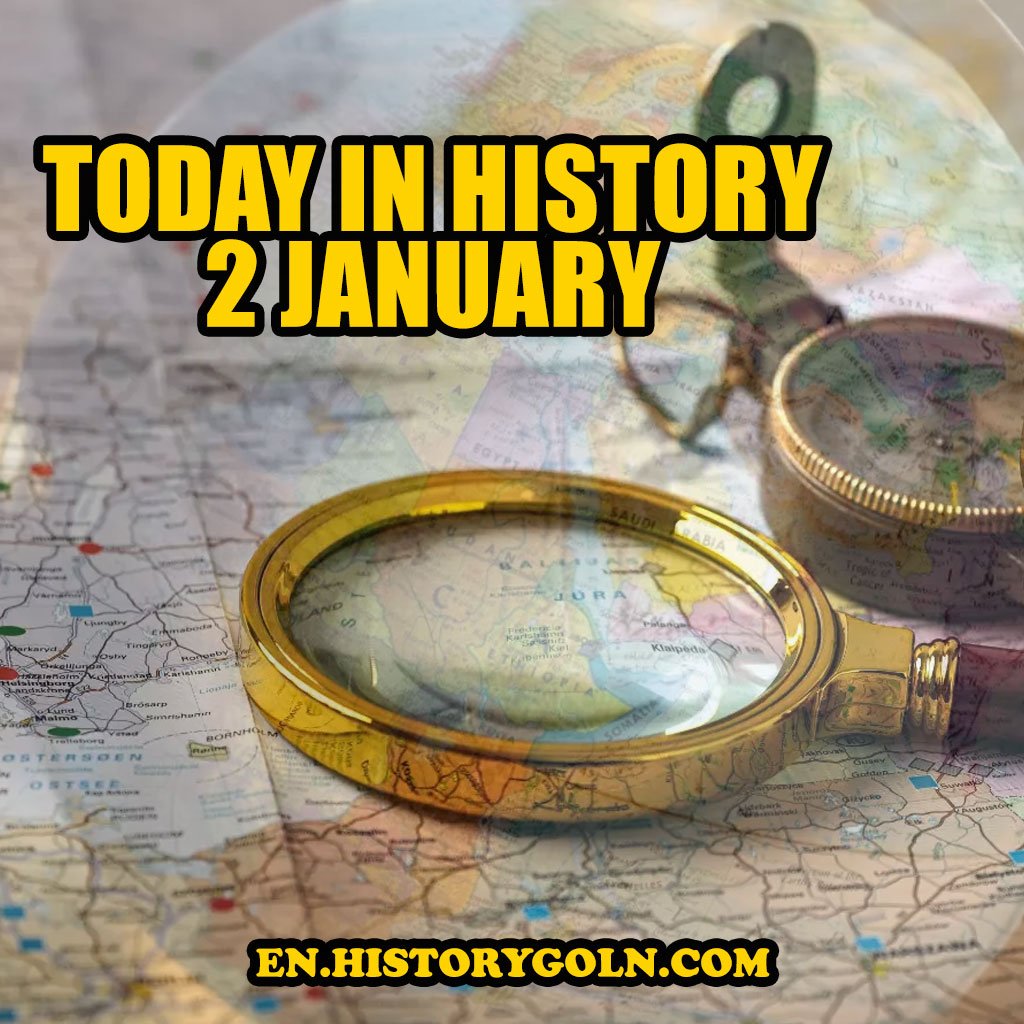2 January is a date with a wealth of historical significance, from social and political events to technological and cultural milestones. This article will delve into some of the most notable events that have taken place on this day throughout the ages.
1492: The Reconquista Concludes
On 2 January 1492, the Reconquista, the series of campaigns by the Spanish to recapture territory taken by Muslims, culminated with the capture of Granada. This marked the end of 781 years of Muslim rule in the Iberian Peninsula. King Ferdinand and Queen Isabella, the Catholic Monarchs, accepted the surrender of Boabdil, the last Muslim king in Spain. This event set the stage for Spain’s rise as a global power, as the nation would soon sponsor explorers like Christopher Columbus in their voyages to the New World.
1811: Senator Timothy Pickering is the first Senator to be censured
Timothy Pickering, a senator from Massachusetts, became the first U.S. Senator to be censured when the Senate approved a motion against him for publicly revealing secret documents communicated by the President to the Senate. Censure is a formal statement of disapproval, and while it can have significant political repercussions, it does not remove a senator from office.
1839: Louis Daguerre takes the first photo of the moon
Louis Daguerre, a pioneering French photographer, took the first-ever photograph of the moon in 1839. While the image was quite blurry by today’s standards, it was groundbreaking at the time. Daguerre, the innovator behind the daguerreotype process – one of the earliest photographic processes – made significant contributions to the field of photography.
1860: The discovery of the planet Vulcan is announced
Astronomer Edmond Modeste Lescarbault announced that he had observed a new planet, which he named Vulcan, between Mercury and the Sun. However, the existence of this planet was later disproved. The idea of its existence stemmed from anomalies in Mercury’s orbit, which were later explained by Einstein’s theory of relativity.
1905: Russo-Japanese War negotiations begin
On this day, the representatives of the Russian Empire and the Empire of Japan began negotiations to end the Russo-Japanese War, which started in 1904. This would eventually lead to the Treaty of Portsmouth later in 1905, largely facilitated by U.S. President Theodore Roosevelt, who later won a Nobel Peace Prize for his efforts.
1920: The second Palmer Raid in the U.S
In the wake of the Red Scare, the U.S. Department of Justice initiated a series of raids against suspected communists and anarchists. The second of these so-called Palmer Raids, named after Attorney General A. Mitchell Palmer, saw thousands arrested and hundreds deported.
1929: U.S. and Canada establish the International Boundary Commission
The U.S. and Canada signed an agreement to establish the International Boundary Commission, which was responsible for surveying and mapping the boundary between the two countries. This commission continues its work today, maintaining the 5,525-mile-long border.
1935: Bruno Hauptmann goes on trial for the Lindbergh baby kidnapping
Bruno Hauptmann went on trial for the kidnap and murder of Charles Lindbergh Jr., the young son of famous aviator Charles Lindbergh and his wife, Anne. Hauptmann was eventually found guilty and executed, but the trial was surrounded by media frenzy and remains one of the most infamous in U.S. history.
1942: The Declaration by United Nations is signed
During World War II, 26 countries decided to oppose the Axis powers together, leading to the signing of the Declaration by United Nations. This agreement laid the groundwork for the modern United Nations, aiming to foster international cooperation and prevent future global conflicts.
1959: USSR launches Luna 1
The Soviet Union launched Luna 1, the first spacecraft to reach the vicinity of the Moon and orbit the Sun. While it missed the Moon, it provided valuable data and was a significant step in the space race between the U.S. and the USSR.
1974: Richard Nixon signs a bill lowering the maximum U.S. speed limit
To conserve gasoline during an OPEC embargo, U.S. President Richard Nixon signed a bill into law that required the maximum speed limit to be reduced to 55 mph (about 89 km/h). This law was relaxed in 1987 and then repealed in 1995.
2006: An explosion in a coal mine in Sago, West Virginia
In one of the worst mining disasters in U.S. history, an explosion in a coal mine trapped 13 miners. Sadly, only one of them survived. The Sago mine disaster brought significant attention to mining safety regulations and procedures.
Other notable events and birthdays:
- 1885: General Wolseley reached Khartoum in Sudan during the Mahdist War. However, he found that the city had already fallen two days earlier, resulting in the death of the British governor, General Gordon.
- 1920: Isaac Asimov, a prolific science fiction writer, and biochemistry professor, was born (or at least this is the date he adopted, his exact birthdate remains unknown). His works, including the “Foundation” series and various robotics-themed stories, have become staples of the sci-fi genre.
- 1971: A barrier collapses at the Ibrox Stadium in Glasgow, Scotland, leading to the death of 66 fans during a football match between Rangers and Celtic.
- 1981: Peter Sutcliffe, also known as the “Yorkshire Ripper,” was apprehended. He was later convicted of the murder of 13 women in England between 1975 and 1980.
In summary, 2 January has been a day of significant historical happenings spanning various domains. From the culmination of centuries-long wars to leaps in space exploration and strides in international cooperation, this day reflects the rich tapestry of global events that have shaped our world.
